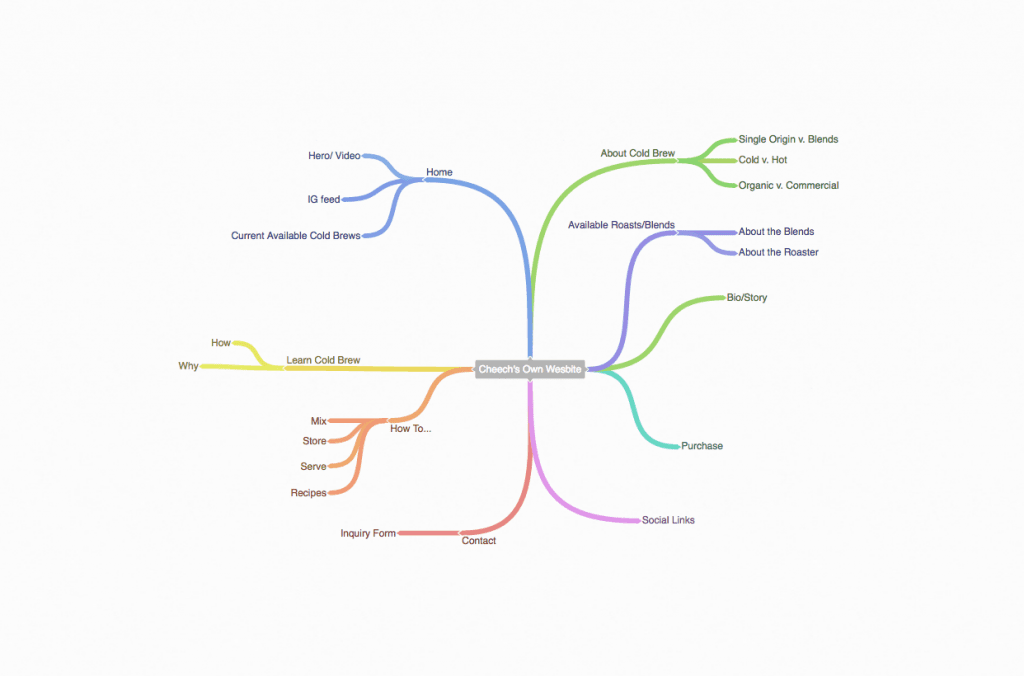
There’s a common thread that all companies share. Regardless of if they’re a startup, mom and pop business, or corporation – their success is determined by the demand of their buyers. It doesn’t matter if they are a B2B or a B2C, at the end of the day, a customer is a customer. Even though the web has made it extremely easy to capture the attention of more leads, it also has opened up the floodgates for many competitors to do the same. So here’s the ultimate question you and every other company faces: How do I stand out from the crowd? The answer is so simple it’s most likely a bit redundant at this point. It comes down to your content strategy.
Content is key.
Content has the power to steal the light from big budget companies and can also be the last nail in the coffin for others. While the concept of creating content is simple, it comes down to the overall strategy and execution that separates one piece of content from another.
We’re firm believers in the power of content and a strong content strategy. It can be a double edged sword though, so we’re going to offer some tips and tricks to make your content work for you rather than the reverse.
A Content Strategy for the Win
Let’s discuss how content plays a key role in your success. Through your website’s copy, blog posts, ads, social media and more, the words and images you use can affect how potential consumers see your brand. If you’re focusing on one more than the other you can miss opportunities. If you focus on them all without the right strategy or manpower, you can spread yourself too thin and can miss deadlines. Hence why we call content a double-edged sword.
A strong content strategy has the power to make your brand seem larger than life. You can rub shoulders with other big name influencers even if you’ve only been around a fraction of the time they have. Your content strategy should be your plan or a roadmap. Before you even start writing a blog post or adjusting your website copy, you should ask yourself, ‘What am I trying to accomplish?’ Consider what your overall company goals are and how you could make your value proposition shine throughout. Another factor we think about before drafting anything is the types of questions we have received or issues we have come across ourselves. From there, a list of topics and ideas begin to form, giving you a blueprint of pieces of content you can create.
When people see the term ‘content’ they tend to think of just simple text or website copy. The truth is, your web content should extend beyond the realm of copywriting. Images, videos, infographics, and more are all considered content and should all be utilized within your overall content strategy.
Keep it Diverse, Keep it Fresh
A well-formed content strategy surpasses blog posts and website content. As I mentioned above, content is more than just text, and your strategy should reflect this. There will always be a situation where a picture speaks louder than words. Branded images are a great way to catch a follower’s eye and keep them engaged. Something else to consider is the goals of your strategy. If you want to increase conversions, you may want to create an incentive that you can gate for their contact info, such as an eBook or white paper.
Different Types of Content Formats
Infographics
The days of boring Excel pie charts and scatter graphs are over. Visually data representation needs more of an artistic flair to stand out. This gives creative teams the ability to flex their design chops and create engaging pieces of content out of boring data. They’re a great way of offering valuable data and information to your followers without putting them to sleep.

Click here to see the full infographic
Videos
With so much content at the fingertips, there are going to be instances where people would choose a more condensed version than what you’re offering. We’ve got short attention spans, and only serious followers will read your 10-page post on a topic such as link building. The fact of the matter is when a shorthand like tl;dr (too long; didn’t read) becomes mainstream it’s time to make content as easy to digest as possible. Many times this can be solved through the creation of a video or video series on certain topics. You’re able to cover a lot more ground in less time while using visual aesthetics to keep the audience engaged.
Memes & Gifs
Unless you’re a straight-laced corporate business, throwing a little whimsy and fun into your social and online strategy is always good to try. They’re usually fun and silly, shining a spotlight on some of the more relevant aspects of society. There are some instances though where you can use a GIF to demonstrate an action or function which helps those who fall into the category of visual learners. Use them sparingly and try to keep them to blog posts and social.
Ultimately there’s a time and place for all of these types of content. When creating a content strategy it’s definitely something to keep in mind. Don’t overcomplicate it either. There’s nothing wrong with taking a written blog post from a year ago and creating a video out of it. The same applies to infographics, case studies, eBooks, etc. If you are already taking the time to create the content, why not use it in as many formats as you could?
Consistency is a MUST
Focus on keeping your content strategy on a consistent schedule. When it comes to your content strategy and posting schedule go for the tortoise’s approach rather than the hare’s. Focus on the content you are producing, take your time and follow a schedule that is manageable with all of the other daily tasks you may have. Instead of going hard and posting every day or week and running out of time to produce quality pieces, do what you can maintain. It’s always easier to scale up and increase your posting schedule. With the hare’s approach, scaling back can actually be detrimental and affect how audiences perceive your brand. A content calendar can help you remain focused on your weekly and monthly tasks. You can find an example of one here.
I’ve mentioned this before but it remains true. Quality over quantity will always win. You should never sacrifice the quality of a blog post for the sake of a deadline.
TL;DR
To sum it up content is key. It’s the life force of your brand and the best way to engage with your audience. Quality should always remain ahead of quantity as you create content, schedule posts and maintain consistency. Use diverse content formats like infographics and videos to accommodate the various preferences of your audience. Most importantly, enjoy what you’re doing. You should be psyched about your content strategy! You’re on your way to becoming an industry influencer, so enjoy this process!


 Our preferred CMS is WordPress.
Our preferred CMS is WordPress. 

Recent Comments